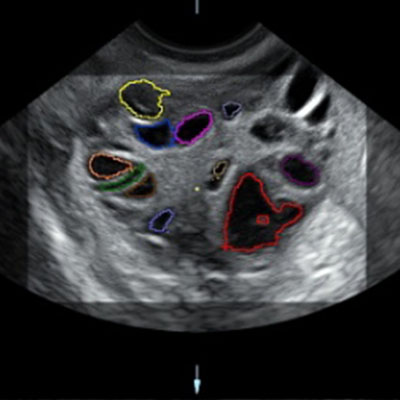
Seminal lavage in males with HIV
Human immunodeficiency virus (HIV) is a retrovirus and, during its most advanced stage of infection, it leads to acquired immunodeficiency syndrome (AIDS). Whilst there is currently no cure for HIV/AIDS, antiretroviral treatments do exist that stop the symptoms from developing or delay them until later. As such, we come across increasing numbers of couples of childbearing age who wish to have children and in which one of the partners is a carrier of the virus.
Since the main means of transmission of the virus are through blood, through sexual intercourse and vertical transmission (from mother to child during pregnancy, childbirth or breastfeeding), for a couple where the male partner is a carrier of the virus, trying for a child through sexual intercourse increases the risk of contagion: from the mother to the future child. Thanks to Assisted Reproduction Technology (ART), these couples can fulfil their dream of becoming parents whilst reducing these risks to almost zero.
This is possible because there are three components to semen (seminal plasma, spermatozoa and other cells) and HIV is found mainly in the plasma and in some of the other cells. A seminal lavage separates these different parts and makes it possible to obtain spermatozoa that are free of the virus.
The technique consists of putting semen through a column of high-density fluids and subjecting it to centrifugation. Only mobile sperm traverse the column right to the very end. The quantity obtained must be analysed. One part is taken and analysed using PCR (a technique that amplifies the genetic material in the virus, if it is present, making detection possible) and the rest of the sample is frozen until the result is obtained.
If a negative result is obtained, the frozen sample can be used in ART, whether this is artificial insemination (as long as the quality of the sample permits) or in vitro fertilisation.

It is true that the technique cannot give a 100% guarantee that the frozen sample is free of the virus because that fraction of the sample has not been analysed. In theory, the two are, however, the same. The fact is that several courses of treatment following seminal lavage have been performed and both the children born and the mothers were free of the virus.
It should be pointed out that this technique is also valid for avoiding transmission of other viruses such as Hepatitis B and C.
This is further indication that Assisted Reproduction Technology not only helps couples with fertility issues but also provides many other types of solutions.
María Carmen Tió, biologist at Instituto Bernabeu
